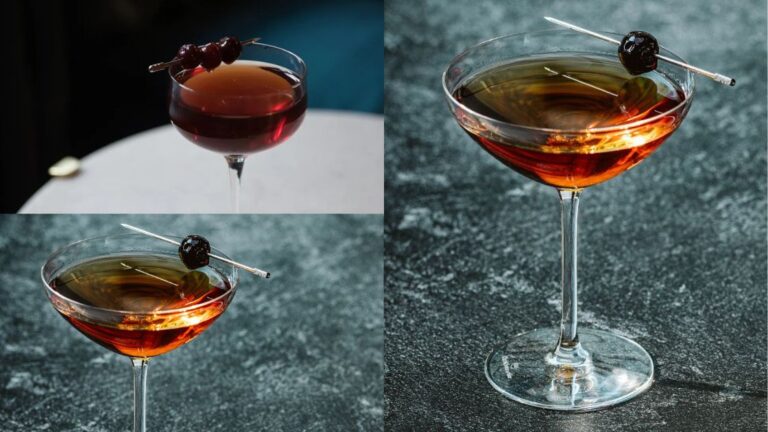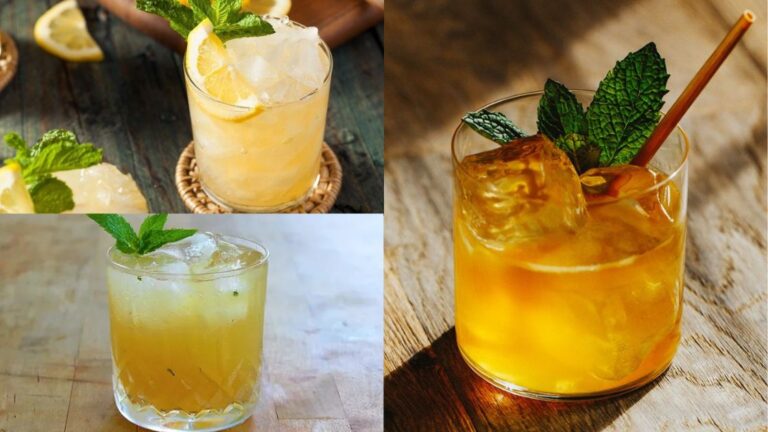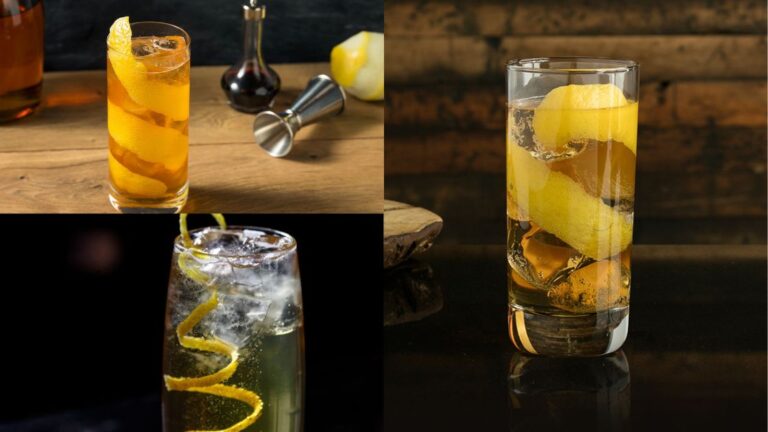Whiskey, loved around the globe, tickles many a palate with its robust flavors and captivating backstory. It’s more than just a drink—it’s a shared experience, enticing the occasional sipper and the whiskey aficionado alike. What makes whiskey so appealing? It’s the symphony of tastes, smells, and mouthfeels it presents, not to mention the intriguing journey it takes from grain to glass. Whiskey is brimming with tales of tradition, artistry, and heritage, adding depth to every nuanced sip.
At the heart of whiskey’s personality is its maturation process. Aging whiskey isn’t just about letting a spirit mellow in a barrel for years on end. It’s a delicate ballet of chemical reactions, time, and surroundings, where a potent, transparent liquid slowly morphs into a sophisticated and mature tipple. This process is indispensable to whiskey-making, adding layers of flavors and scents that turn whiskey into an extraordinarily versatile and engaging drink. In the following parts, we’ll delve deeper into the whiskey aging process, illuminating how a simple grain mash matures into a delectable spirit savored by people all around the world.
Understanding the Basics of Whiskey
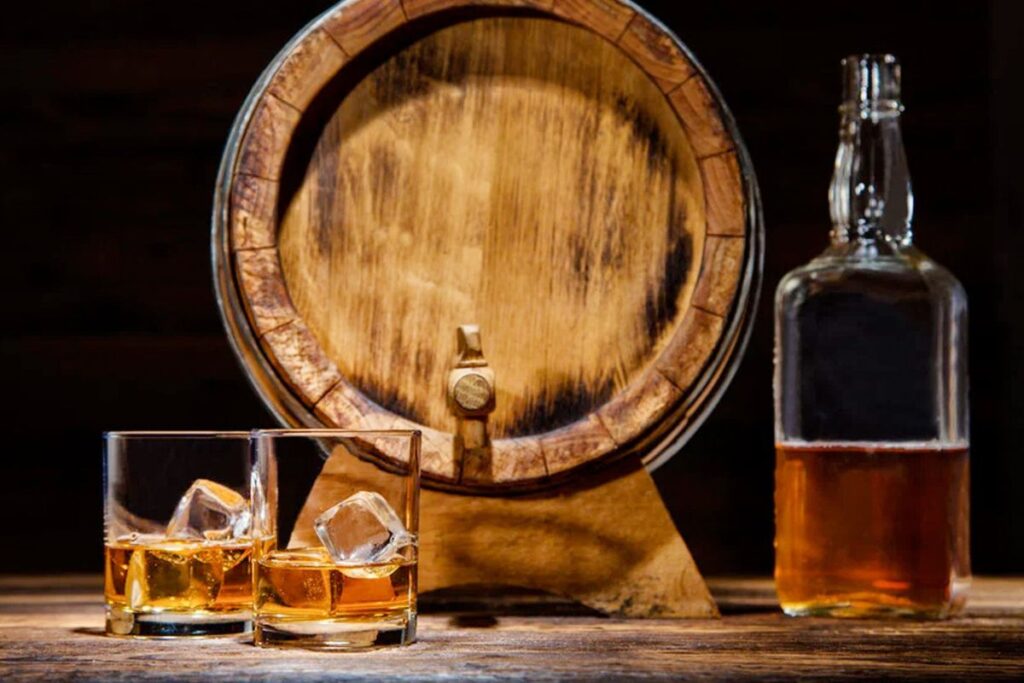
The Distillation Process of Whiskey
The journey of whiskey begins with the distillation process. It starts with a mash of grains – usually barley, corn, rye, or wheat – which is fermented to produce alcohol. This fermented mash, also known as “wort”, is then distilled. Distillation is a process where the wort is heated in a still; the alcohol evaporates before the water due to its lower boiling point, and this vapor is collected and cooled to produce a high-proof spirit known as “new make” or “white dog”. This spirit is clear and very potent, and while it has some flavors from the grains and fermentation, it lacks the depth and complexity of aged whiskey.
Types of Whiskeys and How Aging Process Differs
There are various types of whiskey, and the aging process can differ significantly between them. For instance, Scotch whisky typically uses used barrels for aging, often barrels that previously held bourbon or sherry, while bourbon, by law, must be aged in new charred oak barrels. The type of grain used, the distillation process, and the aging environment also vary among types of whiskey, like rye, malt, corn, and blended whiskies. Each of these factors contributes to the unique flavor profile of the resulting spirit.
The Role of Aging in Flavor Development
Aging plays an essential role in the development of whiskey’s flavor. When the new make spirit is first placed in the barrel, it begins interacting with the wood, slowly extracting compounds that give the whiskey flavors like vanilla, caramel, spice, and oak. Moreover, aging also allows for chemical reactions to occur, creating new flavor compounds and allowing harsh flavors to mellow. It is the subtle orchestration of these interactions and transformations that make each whiskey distinct and gives aged whiskey its depth and complexity.
The Whiskey Aging Process
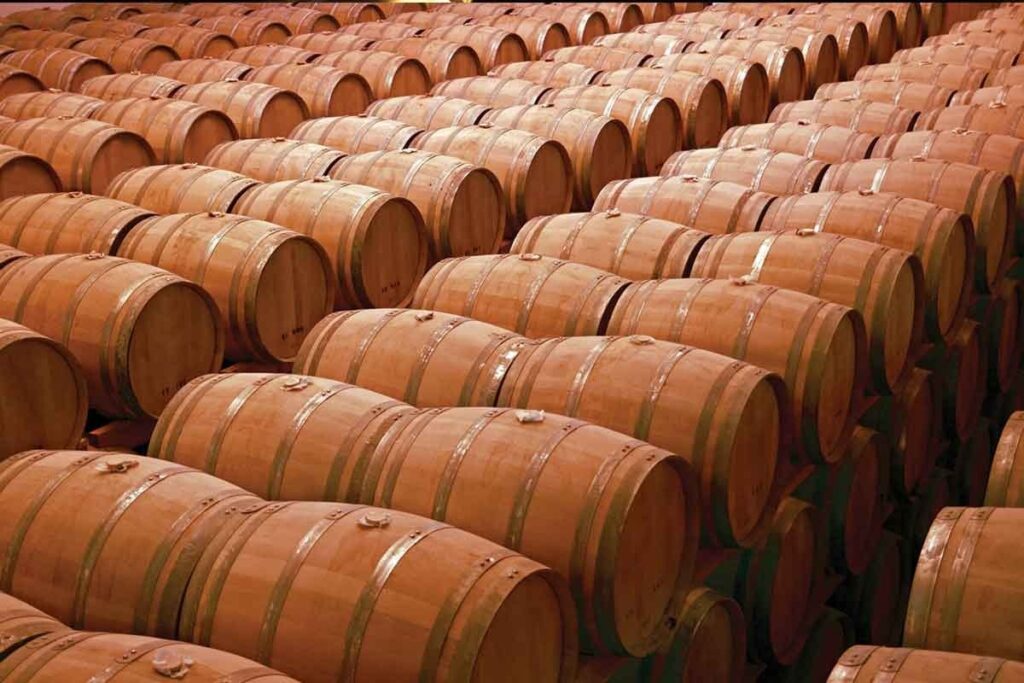
The Beginning of Whiskey Aging
Whiskey aging begins once the distilled spirit, or new make, is transferred into wooden barrels. These barrels are carefully sealed, and the spirit inside starts to interact with the wood, initiating the aging process. As the barrels are stored, the liquid seeps into the wood, drawing out various compounds that impart color, flavor, and aroma to the spirit.
The Barrels in Whiskey Aging and Their Significance
Types of Wood Used: The type of wood used for the barrels significantly influences the flavor of the whiskey. The most commonly used wood is oak, due to its strength, workability, and the fact that it contains many compounds that contribute desirable flavors to the whiskey. American white oak, French oak, and European oak are commonly used, each imparting different flavors to the spirit.
Barrel Charring or Toasting: Before being filled, the interior of these barrels is often charred or toasted. This process caramelizes the sugars in the wood, creating flavors like vanilla and caramel, and forms a layer of char that acts as a natural filter, smoothing out the spirit’s harsh flavors. The level of charring can also influence the flavor; a heavy char will contribute more intense, smoky flavors, while a light char might provide softer, sweeter notes.
Interaction of Whiskey with the Barrel Over Time
Over time, as the whiskey sits in the barrel, it slowly seeps into and out of the wood, driven by changes in temperature. This repeated interaction allows the spirit to draw out more flavor compounds from the wood, while the alcohol and other compounds in the spirit can react to form new flavors. At the same time, some components of the whiskey can evaporate through the barrel in a phenomenon known as the “angel’s share”.
Impact of Environmental Factors on Aging
Environmental factors like temperature, humidity, and atmospheric pressure significantly influence the aging process. For instance, higher temperatures can make the whiskey interact more aggressively with the wood, speeding up aging but potentially leading to excessive evaporation. High humidity environments can reduce the rate at which water evaporates from the barrel, raising the alcohol content of the remaining spirit. Different whiskey producers, from the chill climates of Scotland to the varied seasons of Kentucky, leverage these factors to create their unique styles of whiskey.
The Science Behind Whiskey Aging
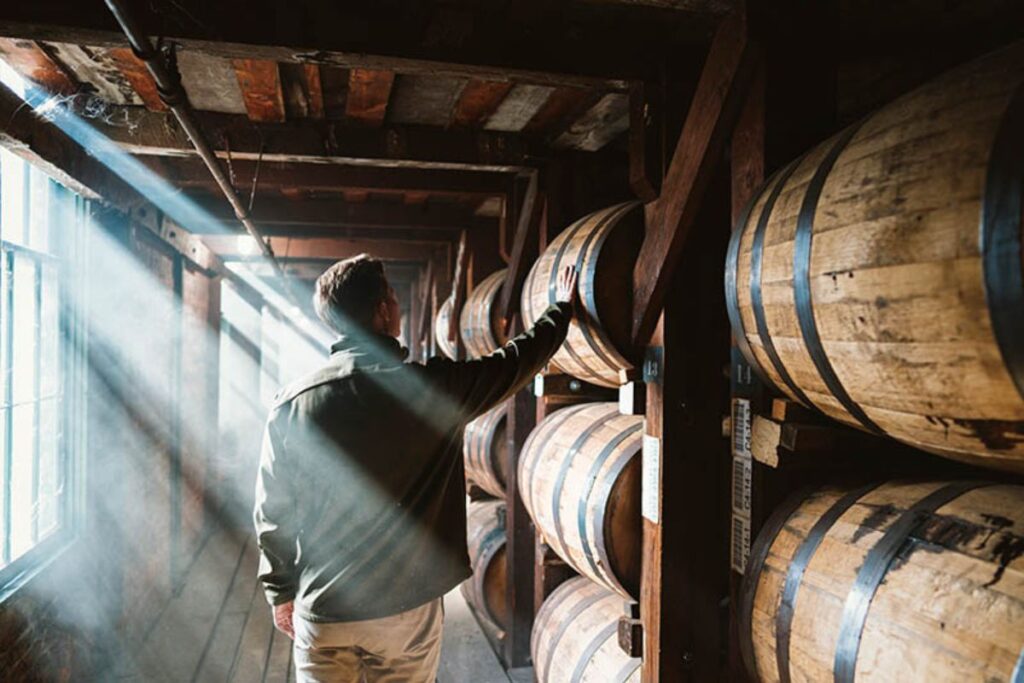
Chemical Changes Occurring During the Aging Process
The aging process is a complex series of chemical reactions and physical interactions that take place over time. As the whiskey interacts with the barrel, compounds such as lignin, tannins, and hemicellulose in the wood break down and dissolve into the spirit. Lignin contributes vanilla and smoky flavors, tannins add complexity and astringency, and hemicellulose breaks down into simple sugars, providing sweet flavors. At the same time, the alcohol in the spirit can react with these and other compounds to create new flavor molecules, adding to the complexity of the whiskey.
How Aging Impacts the Color, Aroma, and Taste of Whiskey
As the spirit extracts compounds from the wood, it changes dramatically. The clear spirit slowly takes on the color of the wood, turning a deep amber. The aroma and taste of the whiskey also transform. Initial harsh, raw flavors mellow, and a wide range of new flavors emerge, including notes of vanilla, caramel, fruit, spice, and oak, all of which come from the wood. The length of aging can profoundly impact these characteristics, with extended aging typically resulting in darker color and more intense, complex flavors.
The “Angel’s Share” Phenomenon
During the aging process, a certain amount of whiskey evaporates through the barrel, disappearing into the air. This evaporation, romantically referred to as the “Angel’s Share”, can impact the concentration of flavors in the remaining whiskey. The rate of this evaporation depends on environmental factors like temperature and humidity. While it represents a loss of potential product, it is a crucial part of the aging process, helping to concentrate flavors and aromas in the spirit and maintain a healthy aging environment within the barrel.
Time and Whiskey Aging
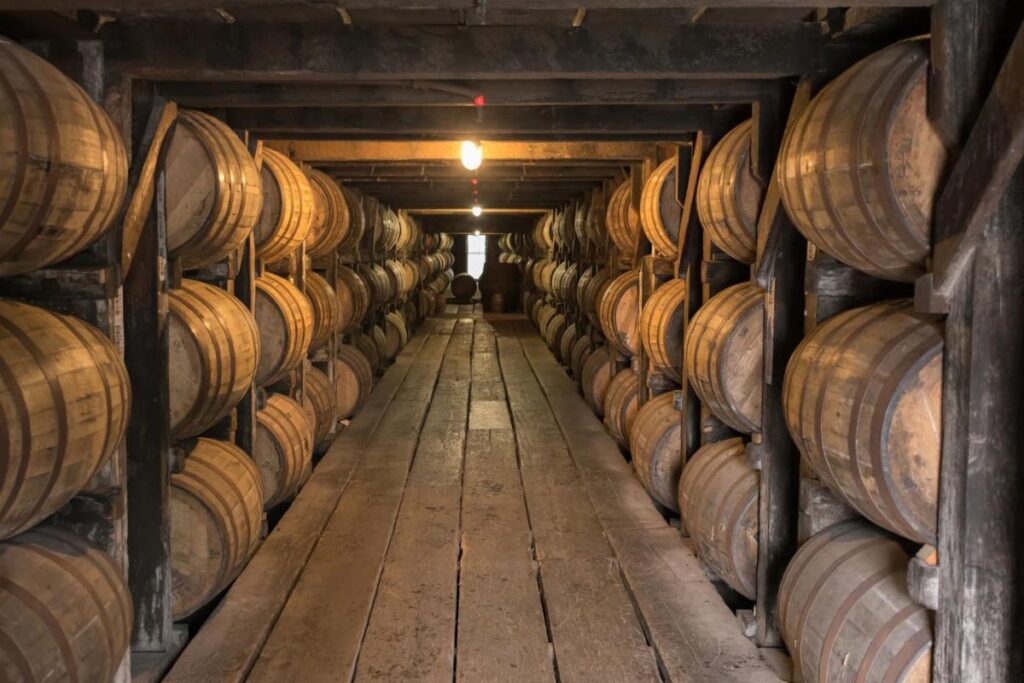
How the Age of Whiskey Affects Its Quality
The age of whiskey is often considered a marker of quality, but this isn’t a straightforward correlation. Aging allows for the development of complex flavors, but more aging isn’t always better. The spirit continues to draw compounds from the wood over time, and while this can add complexity and depth, it can also lead to excessive woody or bitter flavors if left for too long. The optimal aging time varies depending on many factors, including the type of whiskey, the character of the new make spirit, and the aging conditions.
The Concept of “Peak Aging”
“Peak aging” refers to the point at which a whiskey has reached its optimal level of maturity and complexity. It’s the moment when the interplay of extraction, evaporation, and chemical reactions has created a balance of flavors that best expresses the character of that whiskey. Determining the peak aging point is a skill honed by master distillers over many years of experience.
The Controversy Surrounding Ultra-Aged Whiskey
Ultra-aged whiskey, often aged for several decades, is the subject of much debate. Some whiskey enthusiasts argue that these spirits offer unparalleled complexity and depth, while others suggest that such long aging periods can result in overpowering wood influence or an excessive loss of spirit to the “angel’s share”. Ultimately, preference for ultra-aged whiskey often comes down to individual taste.
Understanding Whiskey Age Statement Labels
The age statement on a bottle of whiskey refers to the length of time the youngest whiskey in the bottle has spent maturing in a barrel. It does not include any time the whiskey might spend in a bottle, and it doesn’t mean that all the whiskey in the bottle is of that age. For example, a 12-year-old whiskey has spent at least 12 years in a barrel, but it may contain older whiskies as well. Understanding age statements can help consumers make informed choices about the whiskey they buy.
Global Practices in Whiskey Aging
The aging process varies significantly across whiskey-producing regions due to differences in climate, local laws, and traditional practices. For example, in Scotland, aging often occurs in used barrels, and the cool, damp climate results in a slower maturation process that can produce complex, subtle whiskies. In contrast, bourbon made in the U.S. must be aged in new charred oak barrels, and the varying climate of Kentucky can lead to a more rapid maturation, resulting in bold, robust flavors. Irish whiskey, known for its smoothness, is typically triple distilled and aged in a variety of casks, from bourbon to sherry, influencing its unique flavor.
In addition to these differences, unique aging methods are also employed in various regions. For instance, in Spain’s sherry-producing region, some distilleries age whiskey using the solera system, where new and old spirits are continuously blended. In Japan, distilleries often use a variety of different still shapes and sizes, along with different types of oak for their barrels, to create a diverse range of whiskies that are often blended together. These practices reflect the rich diversity of the global whiskey industry, where local customs and conditions shape the character of each region’s spirits.
Modern Innovations in Whiskey Aging
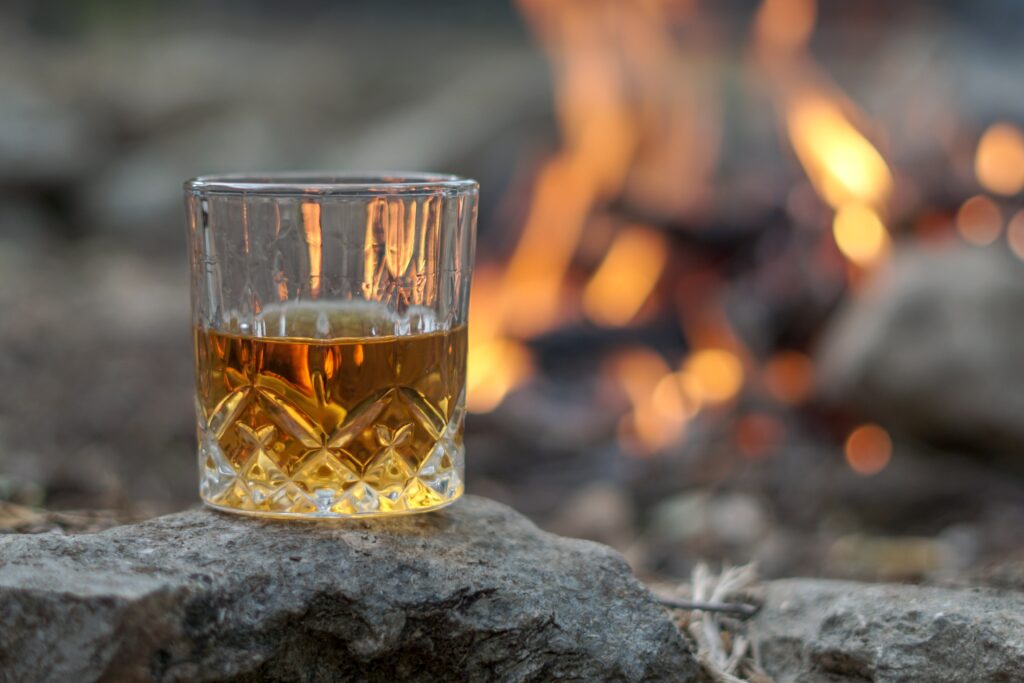
Modern innovations are continuously reshaping the whiskey aging process. Today, some distilleries use techniques like rapid aging, where the spirit is exposed to wood chips or pressure-treated to extract flavors more quickly. Others are experimenting with different types of barrels or aging environments. For instance, some producers are exploring aging whiskey at sea or in high-altitude facilities, leveraging the unique conditions of these environments to create distinct flavors. Advances in data collection and analysis also allow distilleries to monitor the aging process more precisely, gaining a better understanding of how flavors develop over time.
These innovations have a significant impact on the whiskey industry. They offer potential solutions to challenges like the time and expense of traditional aging methods, and open up new possibilities for flavor profiles. At the same time, they raise questions about tradition and authenticity, sparking debates about what constitutes “real” whiskey. Regardless of where one stands on these issues, it’s clear that these innovations are adding an exciting new chapter to the rich history of whiskey production.
Conclusion
Aging plays a pivotal role in whiskey production, transforming a clear, potent new make spirit into a flavorful and complex beverage enjoyed worldwide. From the type of barrels used to the environmental factors of the aging location, every detail in the process contributes to the final character of the whiskey. The understanding of these variables, combined with the distiller’s expertise, results in an intricate balance of flavors and aromas that define each bottle’s unique profile.
Understanding the aging process can enhance the appreciation of whiskey. Each sip of aged whiskey is not just a taste experience but also a reflection of time, craftsmanship, and tradition. From the art of distillation to the science of aging, whiskey production is a testament to human ingenuity and the pursuit of flavor. Whether you’re a seasoned connoisseur or a curious beginner, knowing how whiskey is aged adds another layer of enjoyment to the whiskey-drinking experience, making each glass a journey of discovery.



